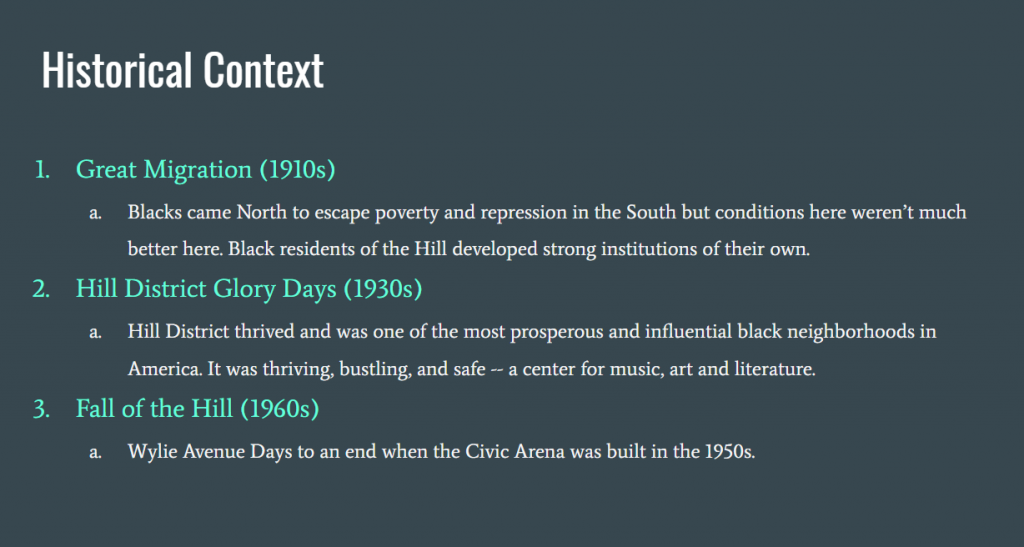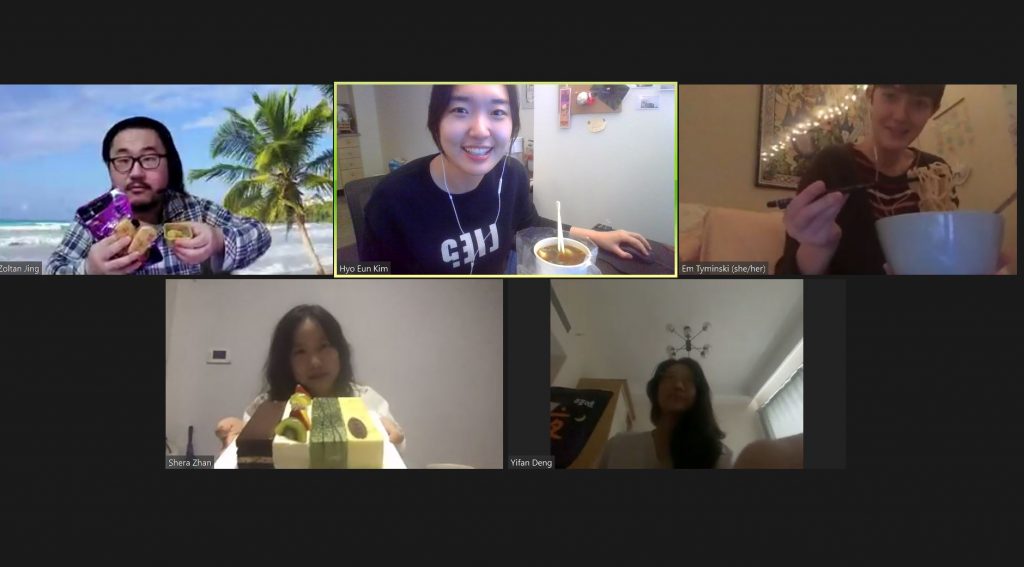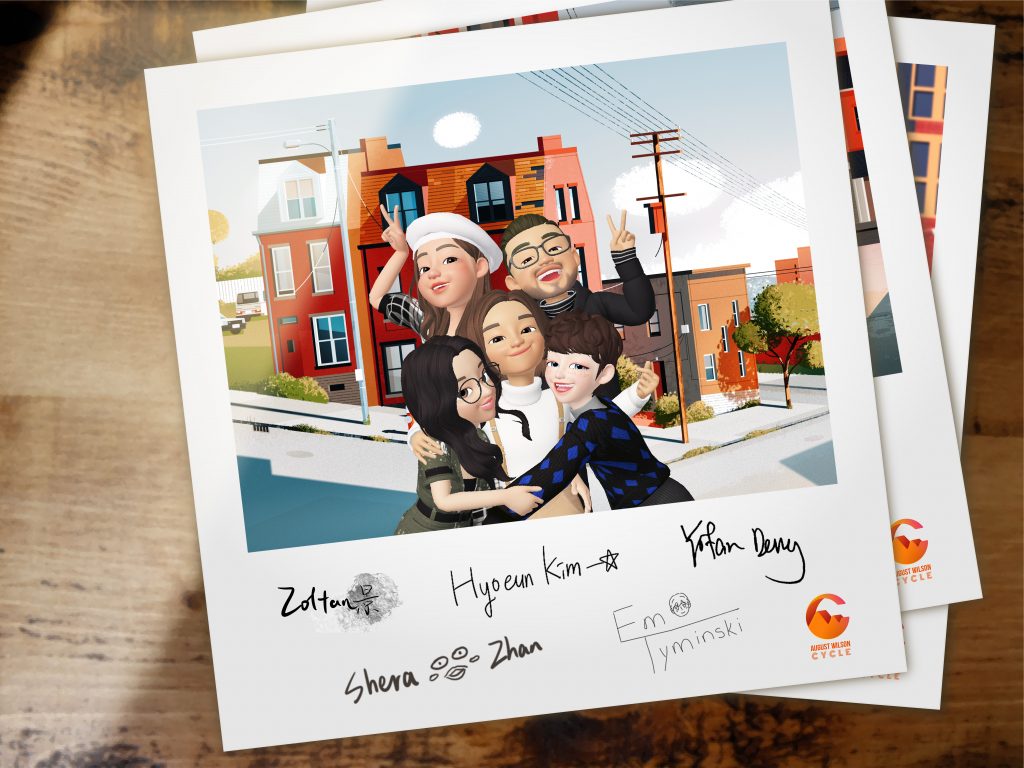This week, our team had meaningful progress regarding project directions, first prototype as well as team production materials. Shera and Gloria got feedback on our logo and poster designs from Shirley and then Shera finalized our project logo representing the characters of A, W, H using warm and welcoming color. The whole shape of the logo symbolizes the Hill and show our project concept, ‘cycle.’
Shera also created our virtual team photo using the social mobile application, Zepeto. Everyone created their own virtual avatar to show their personality and character, and Shera took a team photo with a background image looking like the Pittsburgh area. Even though we are working in a different city, this virtual team photo made us feel like we are working together in the same place.
[Design Concept]
This week, we presented our design concept to our client. (Drum Roll Please) Our client loved our idea so much!!! They agreed with our project direction and overall design materials. Let’s take a look at our project concept in detail.
Design Challenge
“How might we create an application that helps high school students understand the historical context of August Wilson’s play in an interesting way?”
For this design challenge, we all agreed that the best way to learn history is to put ourselves into the historical moment and experience it by ourselves. (We all loved ‘The Magic School Bus!’) Imagine that you have a time machine, and it can take you any time in the past, who does not get excited about it? In addition, if you can talk with someone in that time period? That would be a very exciting experience.
As we cannot build a real time machine in 14 weeks, how about putting young students into the historical moment and let people explore the virtual world representing the Hill District area?
To summarize our concept shortly,
Concept : Virtual Time Machine
Time Period : 1910s / 1930s / 1969
AR interaction : Physical Map + Mobile Phone (user can explore the virtual AR world using avatar)
2D interactive storytelling: users can talk with NPC (non-playable character) and interact with objects in the scene. (*NPC and storyline are inspired by August Wilson’s play.)
You might wonder why we choose these 3 time periods for our experience. We wanted to reflect the changing Hill District culture throughout the whole storyline. In 1910s, many black people came North to escape poverty and repression in the South, and this is an important starting point to understand August Wilson’s cultural background. From this period, black residents of the Hill District developed strong institution of their own.
1930s was a heyday of the Hill District. Hill District thrived and was one of the most prosperous and influential black neighborhoods in America. It was bustling and safe – a center for music, art, and literature. Lastly, 1969 follows the most dramatic year (1968) in African American history. There was a movement and riots, and Hill District’s culture was destroyed by Civic Arena and urban renewal projects. Our team believes that these three time periods can capture the important changes of this area.
In the meantime, our designers started to think about the basic user flows and AR + 2D transitions. From looking at the images below, we started to play around with how our user may want to explore the AR world, how to guide them and provide information, and what kind of storylines would be helpful to deliver our concept.

Basic User Flow Ideation


Side note:
We had our virtual team bonding dinner! It was a very meaningful time getting to know each other.

and here is our virtual team photo!
